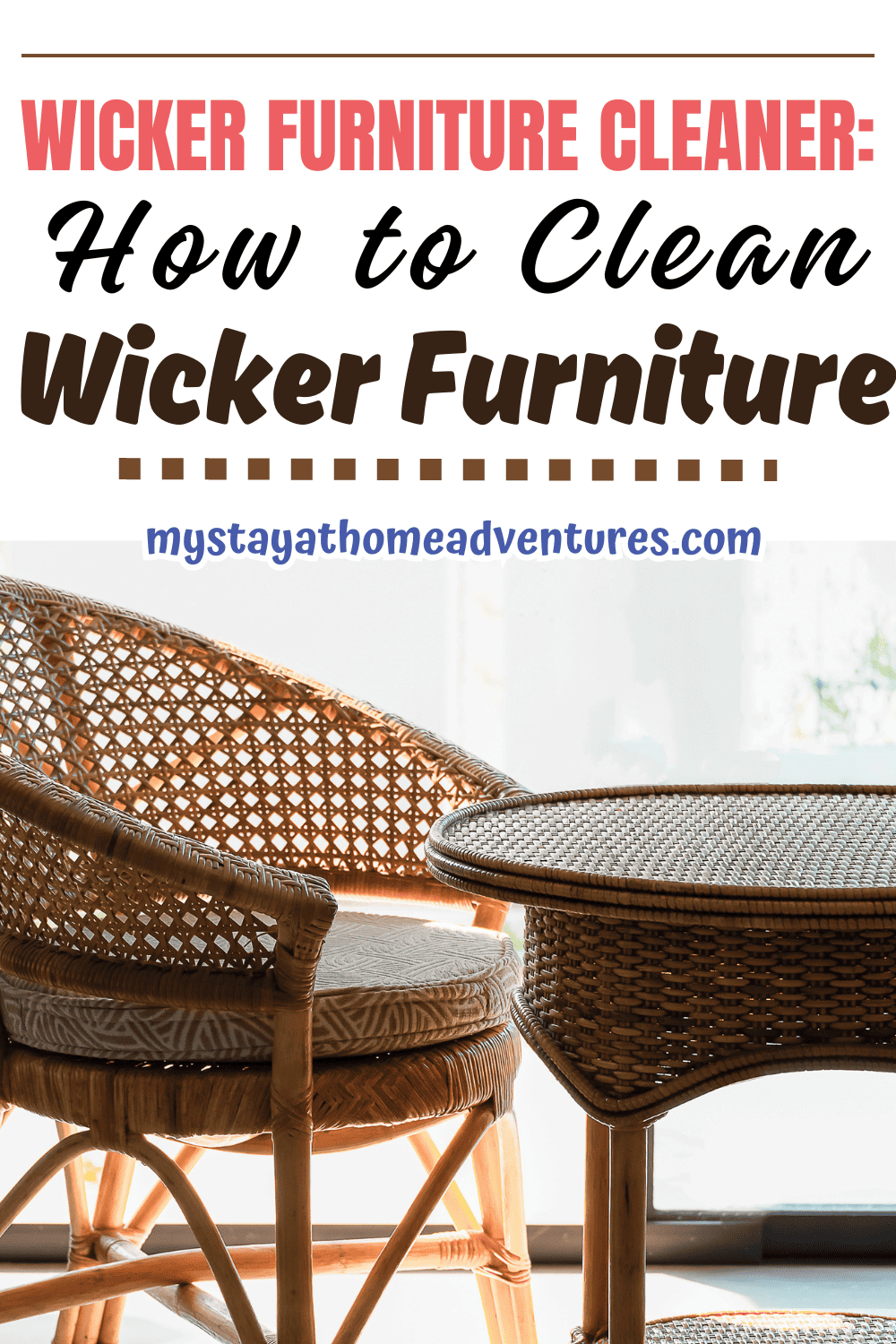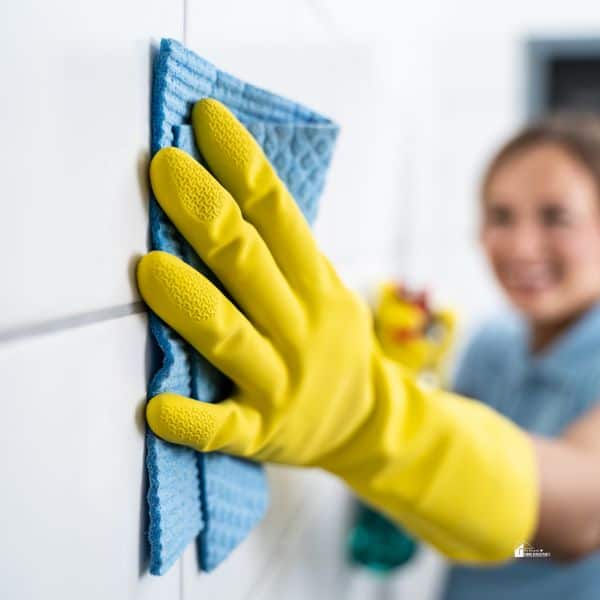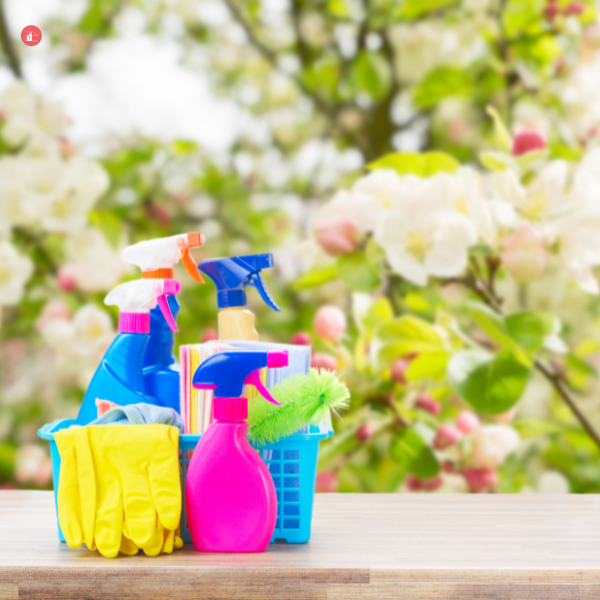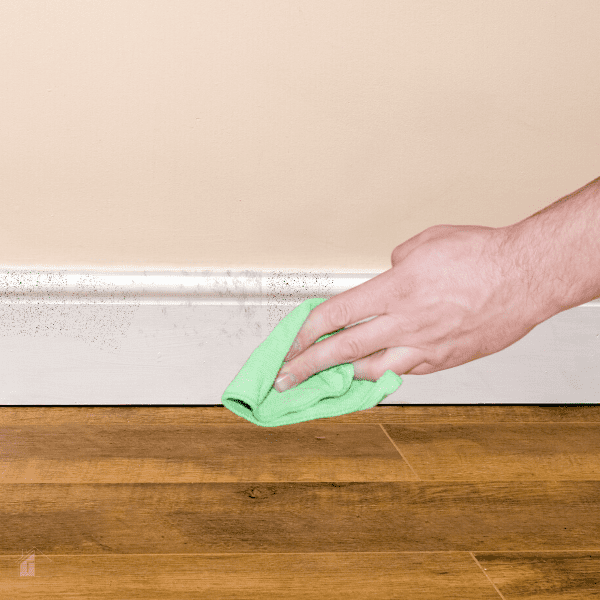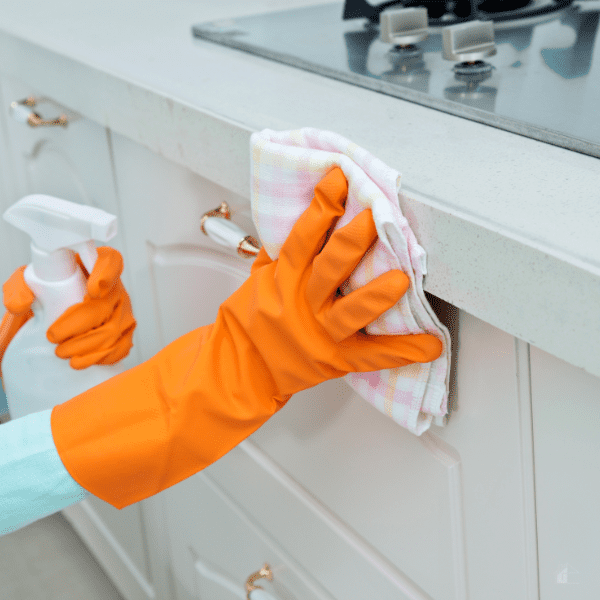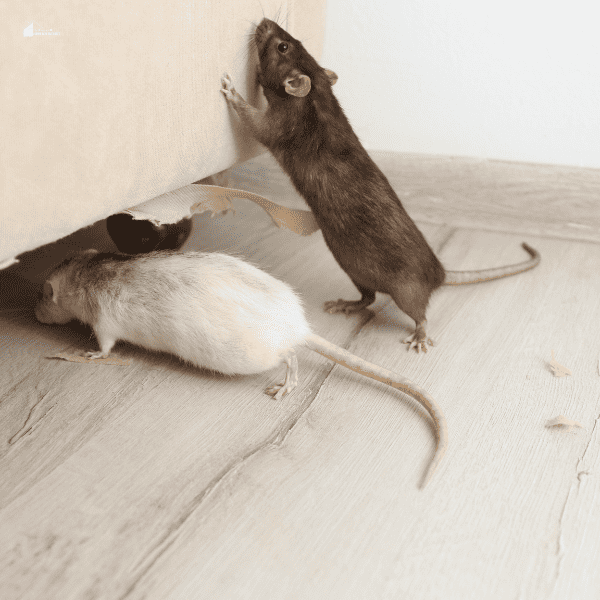Wicker Furniture Cleaner: How To Clean Wicker Furniture
This post may contain affiliate links which might earn us money. Please read my Disclosure and Privacy policies hereWicker furniture brings a touch of charm and warmth to any space, whether it's adorning a cozy living room or enhancing an outdoor patio. Discovering how to clean wicker furniture properly can revitalize its appearance and extend its lifespan. Homeowners who invest in wicker are often looking not just for an aesthetic upgrade, but for pieces that can stand the test of time, too.
Cleaning wicker furniture requires a gentle touch to avoid damaging the delicate weave. From routine dusting to deep cleaning, we'll explore a range of methods suitable for different types of wicker, whether natural or synthetic. Armed with the right tools and knowledge, you can effectively remove stains, mold, and mildew, revitalizing your beloved wicker pieces.
Understanding the nuances of wicker materials is crucial for selecting the appropriate cleaning agents and techniques. We'll discuss common mistakes to avoid and provide eco-friendly alternatives for those concerned about harsh chemicals. Whether you're dealing with indoor wicker chairs or outdoor patio sets, our comprehensive guide will equip you with the skills to tackle any cleaning challenge.
This comprehensive guide is tailored to help you ensure your wicker furniture looks great for years to come.
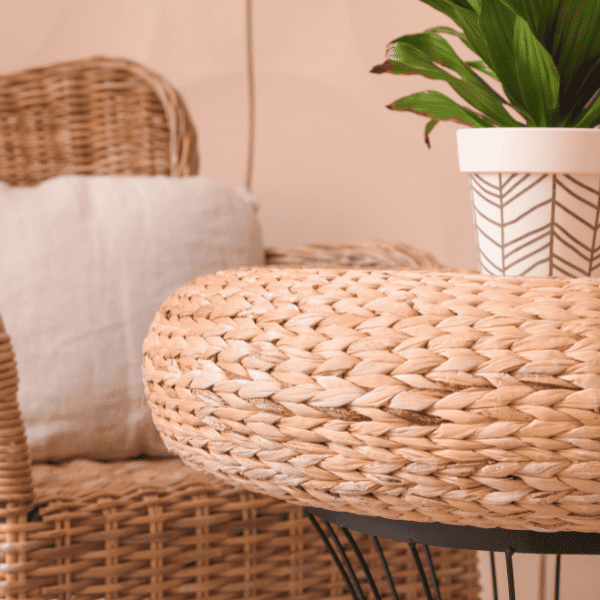
Understanding Wicker Furniture
Before we jump into the cleaning techniques, it's crucial to understand what wicker furniture is and why it deserves a cleaning regime of its own.
Types of Wicker Furniture
Wicker furniture is typically crafted from natural materials such as rattan, bamboo, or willow. There are two main types of wicker weaves: traditional (which is solid and offers a uniform texture) and open-weave (which is, as the name suggests, more exposed and thus easier to clean).
Common Cleaning Misconceptions
Many people assume that water alone is enough to clean wicker. However, this can lead to mold and a breakdown of the weave's integrity. Others believe that strong chemicals can be used, but this can cause the natural fibers to dry out and become brittle.
Key reasons to clean wicker furniture
Regularly cleaning wicker furniture is crucial for a variety of reasons. Firstly, it helps preserve the aesthetic appeal of the furniture, preventing it from looking dull and unkempt. Also, cleaning wicker furniture removes allergens, such as dust and dirt, promoting a clean and healthy living environment.
Mold and mildew growth can be prevented by cleaning, ensuring the longevity of the furniture. Lastly, regular cleaning can help identify any damage or deterioration and allow for prompt repairs, further extending the lifespan of the wicker furniture. So, don't overlook the importance of cleaning your wicker furniture to keep it looking beautiful and well-maintained.
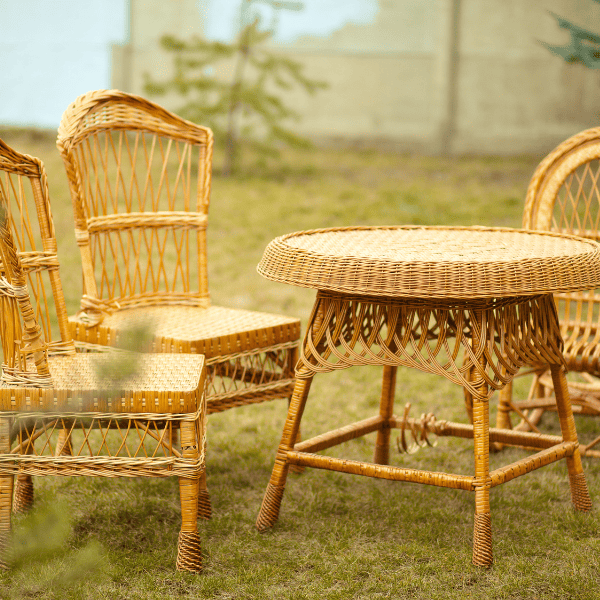
Benefits of maintaining wicker furniture cleanliness
Regularly cleaning wicker furniture offers numerous benefits. Firstly, it helps to preserve the furniture's attractive appearance, preventing it from looking dull and unkempt. This can enhance the overall aesthetics of your living space. Also, cleaning wicker furniture removes allergens such as dust and dirt, promoting a clean and healthy environment for you and your family. It helps to prevent the growth of mold and mildew, ensuring the longevity and durability of the furniture.
Regular cleaning allows you to identify any damage or deterioration, enabling prompt repairs and extending the lifespan of your wicker furniture. So, by maintaining the cleanliness of your wicker furniture, you not only create a visually appealing space but contribute to a healthier and longer-lasting furniture investment.
Supplies Needed for Cleaning Wicker Furniture
Cleaning wicker can vary based on its location and use. Here's a step-by-step guide to help you keep your wicker furniture in top-notch shape.
For Indoor Wicker
- Soft brush
- Vacuum cleaner with a brush attachment
- Mild soap or detergent
- Slightly dampened cloth
For Outdoor Wicker
- Hose
- Soft sponge or brush
- All-purpose outdoor cleaner
- Bleach-free household oxalic acid cleaner
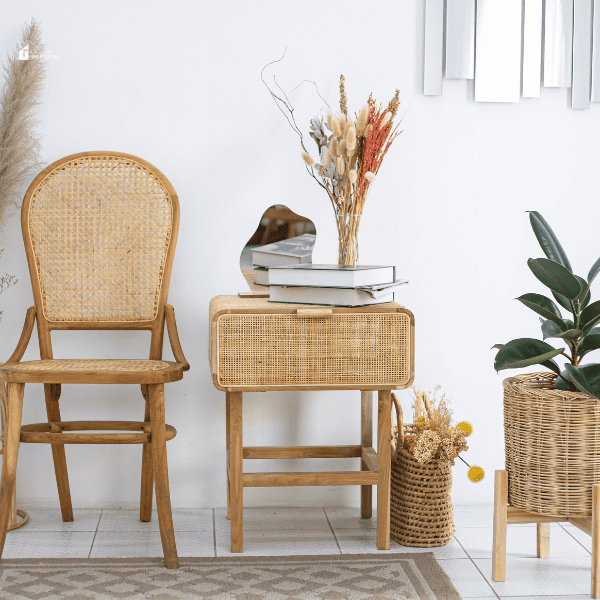
Cleaning Techniques for Different Wicker Types
Indoor Wicker
- Start by removing loose dust with a soft brush or the brush attachment of a vacuum.
- For stubborn spots, use a slightly dampened cloth with mild soap or detergent, and gently rub the spot. Be careful not to soak the wicker to prevent warping.
- Dry with a clean cloth immediately.
- For indoor wicker light in color, a light application of lemon oil can keep it supple.
Outdoor Wicker
- Hose down the furniture to remove loose dirt and debris.
- Use a soft sponge or brush along with an all-purpose outdoor cleaner to gently scrub the wicker.
- For deep cleaning, a bleach-free oxalic acid cleaner can tackle tough stains without harming the environment.
- Rinse thoroughly and allow the furniture to dry completely in the sun to prevent molding.
Tips for Maintaining Wicker Furniture
Preventing Dust Buildup
- Regularly vacuum or brush your wicker furniture to prevent dust from settling in the weave.
Addressing Spills Promptly
- Blot spills immediately with a clean, dry cloth to remove as much liquid as possible and prevent staining.
Sunlight Protection
- Indoor wicker can be damaged by UV rays, so keep it away from direct sunlight. For outdoor wicker, use protective sprays that minimize UV damage.
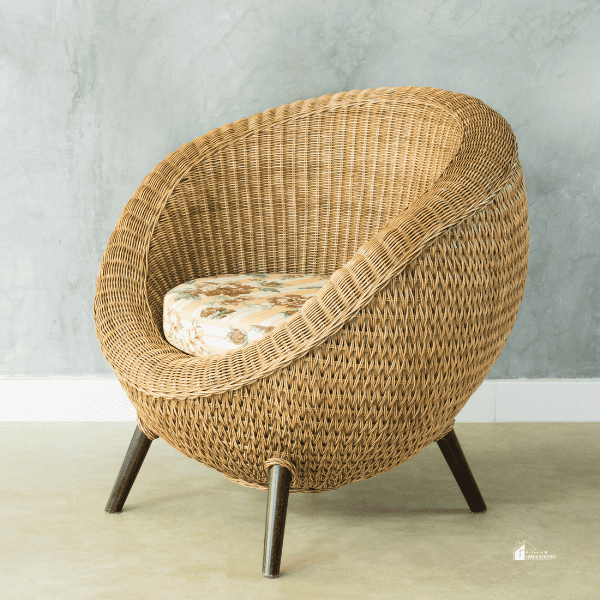
Cleaning Process for Wicker Furniture
When it comes to cleaning wicker furniture, it's important to follow a proper process to ensure thorough cleaning without causing any damage.
Step-by-step guide to cleaning wicker furniture
To clean wicker furniture effectively, follow these simple steps:
- Start by removing any loose dirt and debris from the furniture using a soft-bristled brush or by using a vacuum cleaner's brush attachment. Be gentle to avoid damaging the wicker.
- Prepare a solution of warm water and mild dish soap or a specialized wicker cleaner. Avoid using harsh chemicals that may cause discoloration or damage.
- Dip a soft cloth or sponge into the cleaning solution and gently scrub the wicker, making sure to reach all the nooks and crannies. For stubborn dirt or stains, you can use a soft-bristled brush.
- Rinse the furniture with clean water to remove any soap residue. Use a hose or a bucket of water and a sponge to rinse the wicker thoroughly.
- Allow the wicker furniture to air dry completely in a well-ventilated area. Avoid placing it under direct sunlight as it may cause the wicker to crack or fade.
By following this step-by-step guide, you can keep your wicker furniture looking clean and beautiful for years. Remember to regularly clean your wicker furniture to prevent dirt buildup and maintain its overall condition.
Methods for cleaning woven, painted, and outdoor wicker furniture
Cleaning woven, painted, and outdoor wicker furniture requires slightly different approaches. For woven wicker furniture, use a soft brush or vacuum to remove dirt and debris from the crevices. For painted wicker furniture, be cautious not to use abrasive materials that could damage the paint; instead, opt for a gentle cleaning solution and a soft cloth.
Outdoor wicker furniture may require more frequent cleaning due to exposure to the elements. Regularly rinse it with water and use a mild soap to remove stains or dirt buildup. Always follow the manufacturer's instructions for specific care recommendations.
Dealing with mold, mildew, and stains on wicker furniture
Mold, mildew, and stains can be common issues that arise on wicker furniture, especially in humid environments. To tackle mold and mildew growth, create a solution by mixing equal parts water and vinegar. Gently scrub the affected areas, then rinse and dry thoroughly.
For stubborn stains, apply a paste using baking soda and water to the stains, and let it sit for a few hours before rinsing off. Regular cleaning and prompt stain removal will help maintain the beauty of your wicker furniture for years to come.

Preventive measures to extend the lifespan of wicker furniture
Use Furniture Protectors
- Encase the feet of your wicker furniture to prevent damage from direct contact with the floor.
Regular Coating of Clear Lacquer
- This protects the fibers from drying out and can help keep your wicker looking new.
Apply Mildew-Resistant Sealer
- If used outdoors, apply a mildew-resistant sealer yearly to prevent mold and fading from the sun.
Storage and protection tips for wicker furniture
When it comes to storing and protecting your wicker furniture, there are a few important tips to keep in mind. Firstly, before storing your furniture, make sure it is thoroughly cleaned and dried to prevent any mold or mildew growth.
To protect your wicker furniture from dust and dirt during storage, it's best to cover it with a breathable cover or sheet. Also, store your furniture in a dry, temperature-controlled environment to avoid any damage from moisture or extreme temperature fluctuations. Finally, avoid stacking heavy items on top of your wicker furniture to prevent it from getting flattened or misshapen. By following these storage and protection tips, you can ensure the longevity of your wicker furniture.

Conclusion
Regular maintenance and a gentle touch are the secrets to preserving wicker furniture's timeless beauty. By understanding the nuances of caring for wicker and adhering to proper cleaning techniques, you ensure each piece remains a cherished part of your home's decor. Whether you opt for the DIY route or enlist the assistance of professionals, taking the time to clean and maintain your wicker furniture is an investment in the comfort, style, and sustainability of your household items. Stick with these guidelines, and your wicker furniture will continue to be a favorite feature of your home for years to come.

